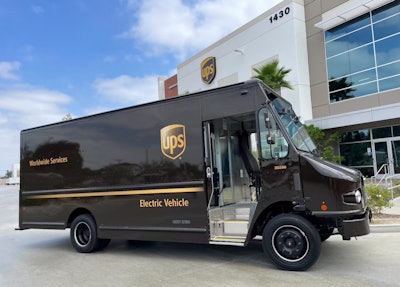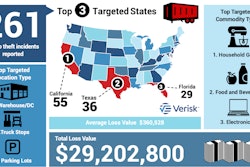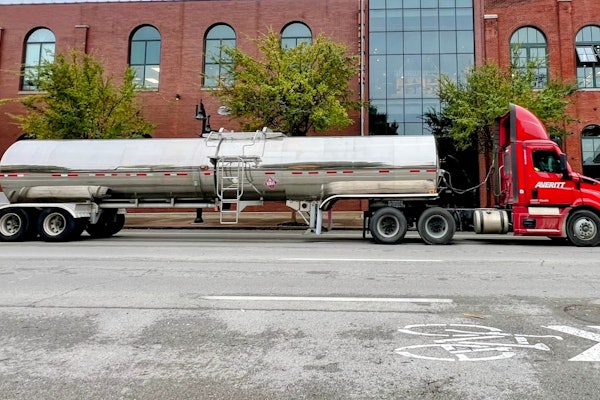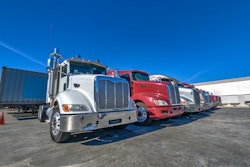
Big acquisitions made this year
Several big mergers and acquisitions took place this year involving fleets of all sizes.
Some of the largest were:
- In a bid to shore up revenues and stabilize its business after closing a rough 2023, UPS (CCJ Top 250, No. 2) in June announced the sale of Coyote Logistics to RXO, Inc, for $1.025 billion. It’s a significant difference from the $1.8 billion UPS spent to acquire Coyote Logistics back in 2015 . Executives previously noted how excess capacity in the market created ongoing issues. With the transaction, RXO continued to serve UPS’ brokered transportation under a contract that runs through January 20230. The integration of Coyote Logistics with RXO’s existing strengths establishes the third-largest brokered transportation provider in North America.
- Ryder System in February acquired Concord, N.C.-based Cardinal Logistics, a provider of dedicated fleet services, including last-mile delivery and contract logistics services, and includes a complementary freight brokerage service. Cardinal primarily serves the consumer packaged goods, omnichannel, grocery, building products, automotive and industrial verticals.
- Knight-Swift in July acquired Los Angeles-based regional LTL carrier Dependable Highway Express, a move that strengthens Knight-Swift's West Coast LTL operations and dovetails with Knight-Swift's existing AAA Cooper and Midwest Motor Express businesses for coast-to-coast service. Terms of the deal were not disclosed.
- Schneider National last month agreed to acquire Baltimore-based Cowan Systems and its affiliates for $390 million. The deal is expected to close before year end. At closing, Cowan Systems will operate as a wholly-owned subsidiary of Schneider.
-
International sheds Navistar name in business transformation effort
In a nod to the company’s origins, Navistar, the parent company of International Truck and IC Bus, adopted the new name. The move was designed not only to complement its strategy to make a mark in the domestic commercial truck market, but as a full solutions provider that includes product, financing, connectivity, parts, maintenance and vehicle charging.The name change included the launch of the My International digital interface, bringing together digital tools like OnCommand Connection and International 360 service communications tool.
Dan Kayser, International’s executive vice president of commercial operations, said International will focus on offering a new Class 8 product to the market.
-
Supply chain disruptions and natural disasters created market opportunities
The short-lived East and Gulf Coast ports’ strike offered an opportunity for spot market carriers. Meanwhile, as shippers grappled with Hurricane Helene cleanup efforts, along with the impact of the ports’ strike, spot load volumes increased as it led to higher demand for flatbed capacity.-
 FedEx Freight
FedEx Freight
FedEx spins off its LTL business
FedEx announced the spin-off of its less-than-truckload freight business, FedEx Freight, to a separate publicly traded company. Set to be completed with the next 18 months, Brie Carere, executive vice president and chief customer officer for FedEx Corporation, said that it gives the new company “an opportunity to play offense,” and seek out more LTL business.The move makes the entity a significant competitor in the LTL industry, with Raj Subramaniam, FedEx Corp. president and CEO, calling it the “right time” to focus on the “unique dynamics of the LTL market.” In a call with analysts, he noted that with the development, FedEx Freight becomes the leading LTL pure-play, and the largest carrier by revenue with the broadest network and fastest transit times.
FedEx Freight had a revenue of $9.4 billion in the fiscal year 2024, representing approximately 12% of FedEx’s total revenue of $78.3 billion.
-
Managing costs and cost increases continue to plague businesses
The American Transportation Research Institute’s annual Operational Costs of Trucking report showed consistent increases for three consecutive years. Following a nearly 40-cent surge in 2022, the cost per mile to operate a truck rose by an additional 2 cents in 2023, bringing the average operational cost to $2.27 per mile.A Fleetworthy survey also indicated that the cost of compliance is the top challenge by motor carriers, with regard to compliance, safety, and administrative-related tasks. Ninety-six percent of respondents reported to reducing costs in other areas of their business to cover compliance-related expenses over the past 12 months.
On another note, a report from American Trucking Associations’ Technology & Maintenance Council and Decisiv Inc., showed that heavy-duty parts and labor costs have continued to decline. Though those declines slowed in the second quarter of the year, the cost reversal was a positive development, which faced a 3.1% increase in repair and maintenance expenses last year, rising to $0.202 per mile, according to research from ATRI.
Decisiv President and CEO Dick Hyatt noted that fleets and service providers are seeing a return to predictability and an enhanced ability to more effectively plan service cost allocations.










